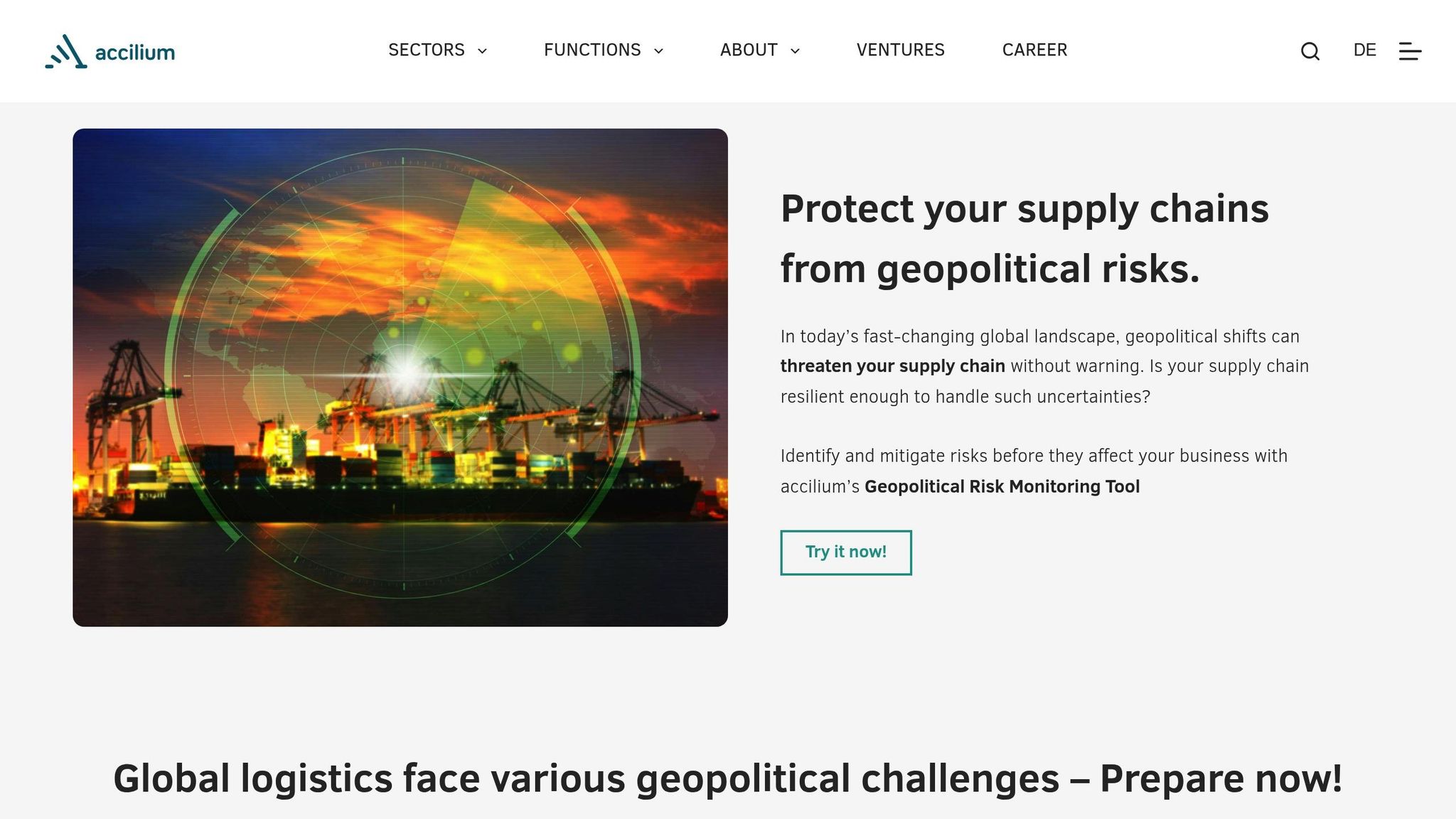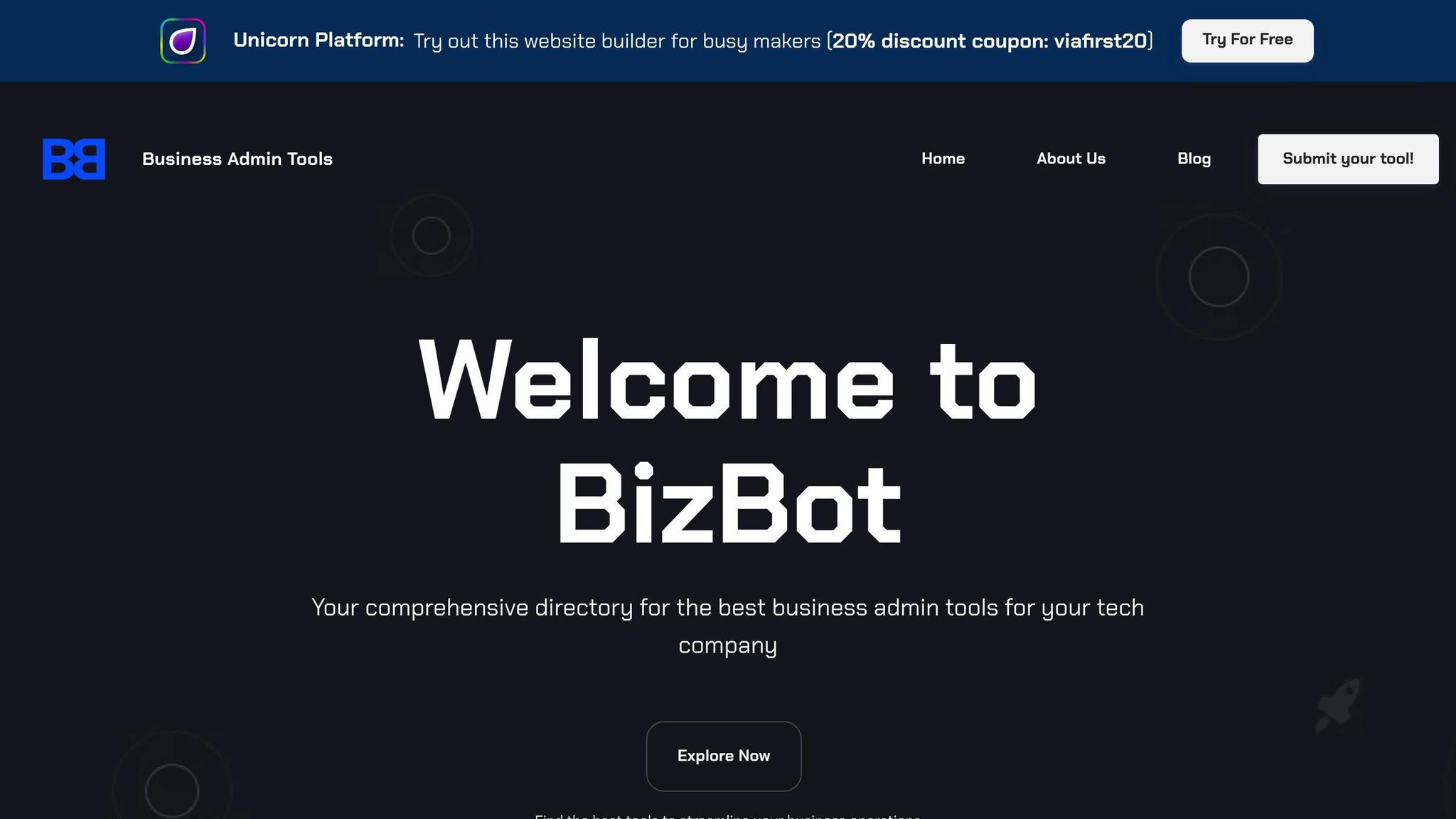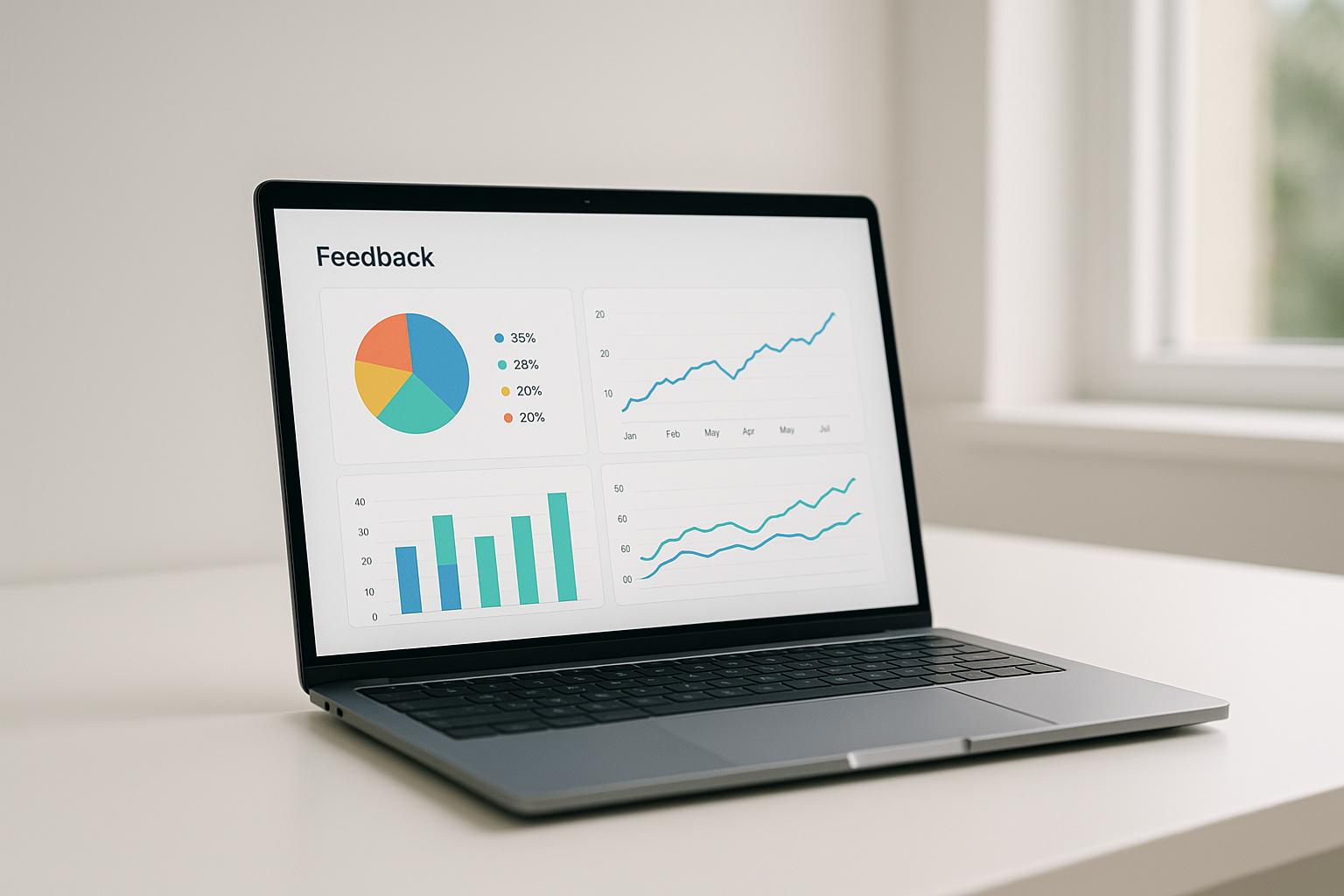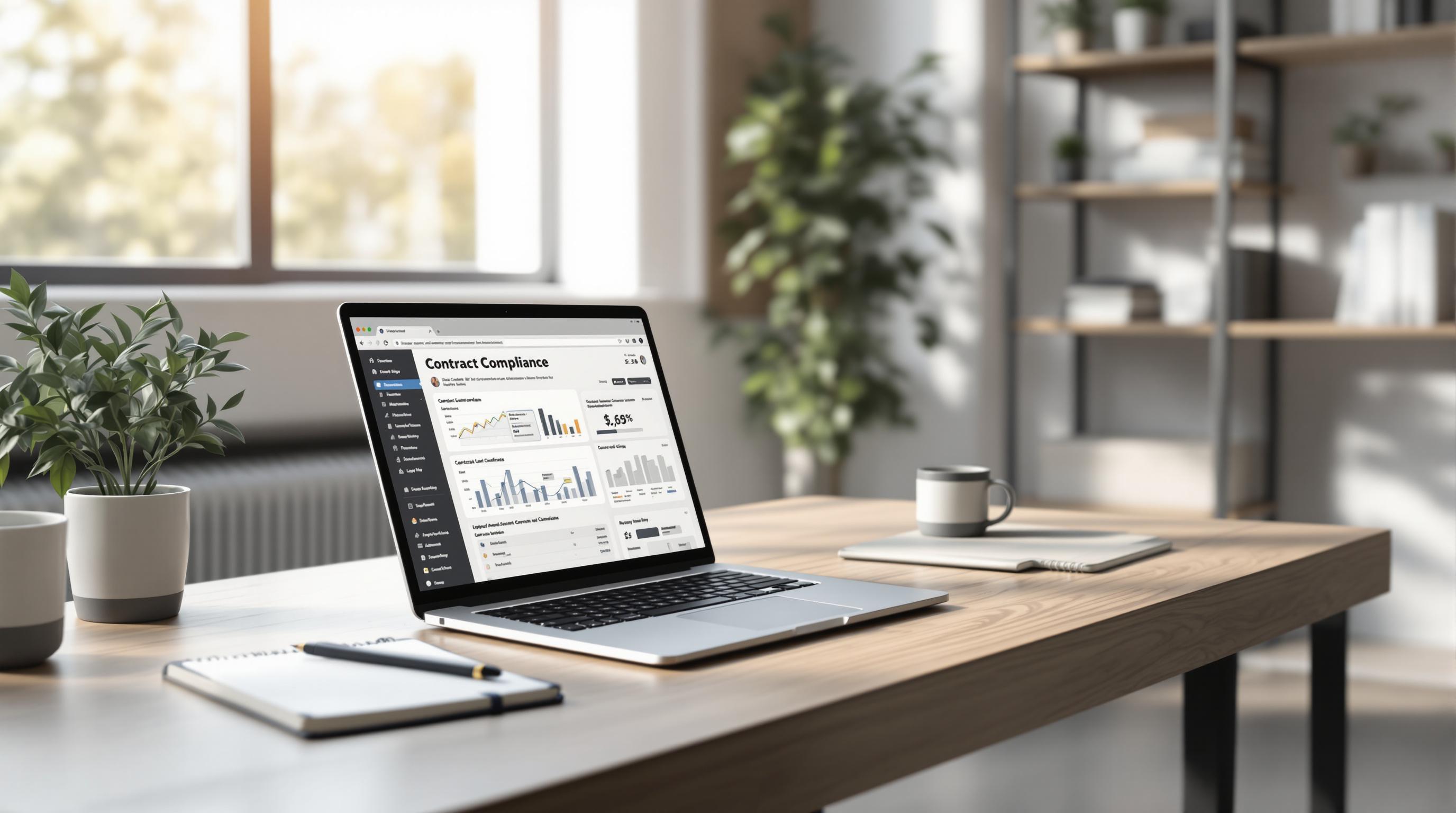Geopolitical risks can disrupt global supply chains, impacting businesses of all sizes. From political instability to trade wars, these risks are external and often unpredictable, making it essential for companies to monitor and prepare for potential disruptions. This guide outlines how businesses can use advanced tools to track risks, predict disruptions, and strengthen supply chain resilience.
Key takeaways:
- Geopolitical risks include political instability, sanctions, cyberattacks, and regulatory changes, all of which can disrupt supply chains.
- Risk analysis tools provide real-time tracking, predictive analytics, and supply chain mapping to help businesses anticipate and respond to threats.
- Strategies like supplier diversification, flexible inventory management, and compliance monitoring are essential for mitigating risks.
Businesses that invest in these tools and strategies can reduce disruptions, protect their operations, and stay competitive in a volatile global environment.
RANE Geopolitical & Threat Intelligence Product Overview
Key Features of Geopolitical Risk Analysis Tools
Today's geopolitical risk analysis tools are designed to do more than just track news headlines. They combine real-time data, predictive analytics, and supply chain visualization to help organizations anticipate disruptions and make informed decisions. These platforms go beyond surface-level monitoring, delivering actionable insights that support both strategic planning and day-to-day operations. Here's a closer look at the standout features that make these tools indispensable.
Real-Time Risk Tracking
At the heart of effective geopolitical risk tools is real-time risk tracking. These systems continuously monitor global events, policy shifts, and emerging threats that could affect business operations. By pulling data from a wide array of sources, they create a detailed and up-to-date picture of potential risks.
AI and machine learning play a critical role here, processing thousands of data points every day to pinpoint key threats. This automation ensures that critical developments rise above the noise, preventing important risks from being overlooked.
Real-time alerts keep stakeholders informed, tailoring notifications to specific regions or risk categories. For example, a manufacturing company might receive immediate updates about labor strikes in supplier regions or new trade regulations impacting their markets.
The most advanced platforms go a step further by offering risk scoring and prioritization. These features help organizations focus on the most urgent threats, considering factors like the likelihood of occurrence, potential impact, and how quickly the risk might materialize. This prioritization is especially valuable for addressing supply chain vulnerabilities.
Predictive Analytics and Planning
While real-time tracking addresses immediate threats, predictive analytics equips businesses to prepare for what’s ahead. By analyzing historical data and current trends, these tools forecast potential disruptions, making them far more powerful than basic monitoring systems.
Scenario modeling is a standout feature, allowing companies to simulate the impact of various geopolitical events. Whether it’s a trade war, currency fluctuation, or regional conflict, these models help organizations understand how different situations could affect their supply chains and financial health.
Machine learning enhances this capability by identifying subtle patterns in geopolitical trends. For instance, shifts in diplomatic language or unusual trade activity can signal larger changes on the horizon. These early warnings give companies a head start in preparing for potential risks.
Predictive analytics also supports contingency planning. By developing strategies for likely scenarios, businesses can respond to real-world events much faster, cutting reaction times from days to just hours. Some platforms even integrate economic modeling, helping executives assess the financial impact of risks and determine which mitigation strategies offer the best value.
Supply Chain Mapping and Visibility
Building on real-time tracking and predictive insights, supply chain mapping provides a deeper understanding of vulnerabilities. These tools create visual representations of supply networks, exposing dependencies and risks that might not be obvious through traditional methods.
Multi-tier supplier mapping is particularly valuable, as it extends visibility beyond direct suppliers to include sub-suppliers and raw material sources. This broader perspective is crucial since disruptions often originate deep within the supply chain, far from the primary business relationship.
Geographic risk overlays add another layer of insight by combining supply chain maps with geopolitical data. This allows companies to see exactly where their vulnerabilities lie, such as suppliers operating in politically unstable regions or areas prone to natural disasters.
Dependency analysis highlights single points of failure within supply networks. By identifying suppliers or regions that could disproportionately affect operations if disrupted, businesses can make informed decisions about diversifying suppliers or creating backup plans.
Real-time tracking capabilities further enhance visibility, monitoring the status of key suppliers and logistics routes. By integrating with shipping and logistics data, these tools provide early warnings of potential disruptions and offer insights into how goods move through at-risk transportation networks.
To mitigate risks, many platforms also suggest alternative sourcing options. Whether it’s identifying backup suppliers or rerouting shipments, these features help businesses respond quickly when their current supply chains face heightened risks. This not only speeds up the diversification process but also ensures smoother implementation of contingency plans.
Geopolitical Risk Analysis Tool Examples
These tools showcase how advanced features like risk tracking, predictive analytics, and supply chain mapping are applied in real-world scenarios. Several platforms are specifically designed to help organizations navigate the complexities of geopolitical uncertainties. By utilizing data-driven insights and customized risk assessments, these tools help businesses address potential disruptions before they arise.
Accilium Geopolitical Risk Monitoring Tool

The Accilium Geopolitical Risk Monitoring Tool, also known as Pangea Analytix, focuses on identifying and mitigating supply chain disruptions through customized risk evaluations. It allows companies to define specific risk criteria that align with their sourcing strategies. The tool provides real-time insights, offering a clear view of potential risks, which enables businesses to take proactive measures across their supply networks. These features support strategic planning and fast operational adjustments. By tailoring risk assessments, companies can refine their supplier strategies and strengthen their operational resilience.
Let’s take a closer look at another influential resource.
World Economic Forum Global Risks Report

The World Economic Forum's Global Risks Report 2025 delivers an in-depth examination of the most pressing global risks, painting a picture of a world grappling with geopolitical, environmental, societal, and technological challenges. These intertwined risks jeopardize global stability and disrupt supply chains that depend on steady international cooperation. The report highlights state-based armed conflict as the most immediate concern for 2025, with nearly 24% of survey respondents identifying it as the most critical challenge for organizations. Additionally, its country-specific risk indices offer valuable insights for evaluating suppliers, encouraging procurement teams to factor geopolitical stability into their vendor selection processes. This comprehensive analysis serves as a crucial resource for developing more resilient supply chain strategies.
sbb-itb-d1a6c90
How to Implement Geopolitical Risk Analysis
Navigating geopolitical risks effectively means embedding flexibility into every part of your supply chain - from supplier relationships to inventory strategies and compliance measures.
Supplier Diversification and Multi-Sourcing
Reducing reliance on a single supplier or high-risk region is a key step in managing geopolitical risks. Concentrating your supply chain in one area or with a few suppliers leaves your operations vulnerable to political instability, trade disputes, or regional conflicts.
To mitigate this, build a network of suppliers across multiple countries and regions. This diversification helps cushion your supply chain against localized disruptions. When selecting suppliers, evaluate their geographic spread, the political stability of their operating regions, and their own supply chain vulnerabilities.
Multi-sourcing strategies are most effective when you maintain active relationships with suppliers across different risk categories. Strive for a balance between suppliers in stable regions and those in cost-efficient markets. It's not enough to list potential backup suppliers - ensure these alternatives are thoroughly vetted and ready to step in when needed.
Once you’ve diversified your supplier base, it’s time to rethink inventory management in light of potential risks.
Flexible Inventory Management
Traditional inventory management is often focused on minimizing costs and optimizing turnover. However, geopolitical risks demand a more dynamic approach, incorporating scenario planning to prepare for potential disruptions.
Develop risk-based scenarios that outline the impact of trade disputes, regional conflicts, or sudden sanctions on your supply chain. Each scenario should include specific inventory strategies and clear action triggers.
Buffer stock strategies should be tailored to risk levels. For instance, maintain higher safety stock for products sourced from unstable regions, while keeping leaner inventories for low-risk areas. This targeted approach ensures you're prepared without unnecessarily inflating costs.
Positioning inventory strategically is another critical step. By placing stock closer to end markets, you can maintain service levels even when shipments are delayed or restricted due to geopolitical tensions. Together with diversified sourcing, these measures create a supply chain that’s better equipped to handle disruptions.
Regulatory Compliance and Adaptation
Once sourcing and inventory strategies are in place, focus on compliance to protect against regulatory risks.
Geopolitical events often lead to regulatory changes, sanctions, trade controls, and heightened scrutiny. A strong compliance strategy involves structured policies and procedures to ensure adherence to laws and standards while minimizing the risk of non-compliance.
To stay ahead of regulatory shifts, set up monitoring systems that track policy changes in all markets where you operate or source materials. This includes not only your direct suppliers but also their sub-suppliers, as changes in tariffs, sanctions, or export controls can ripple through the supply chain.
Automated compliance tools can simplify the complexity of managing regulations across multiple jurisdictions. These systems can flag potential issues, update documentation as rules change, and ensure new requirements are reflected in supplier contracts and operations.
Build a compliance framework that adapts quickly to new regulations. This might involve flexible contract terms, clear escalation protocols for emerging issues, and training programs to help teams identify and respond to regulatory changes. By combining proactive monitoring with a readiness to act, you can avoid costly compliance failures and keep your supply chain running smoothly, even in uncertain times.
Tools for Managing Geopolitical Risk Analysis
As geopolitical uncertainties grow, having the right tools at your disposal can make a big difference in how effectively your business navigates risks. Managing geopolitical risks requires tools that keep operations running smoothly, ensure compliance, and maintain flexibility in supply chains. Small businesses, in particular, often face challenges in finding affordable yet effective solutions. These specialized tools can seamlessly integrate into broader risk management strategies, helping to strengthen supply chain resilience.
Discovering Business Tools with BizBot

BizBot is a platform designed to help businesses locate and organize essential administrative tools. It provides a curated selection of solutions for accounting, legal, HR, banking, and management needs. With this streamlined approach, businesses can easily identify tools that address various operational challenges, saving both time and effort.
BizBot’s Features for Small Businesses
BizBot focuses on delivering cost-effective, scalable solutions tailored to freelancers, small businesses, and growing companies. Its categorized offerings - such as HR tools, multi-currency banking, digital CFO services, and ownership management solutions - allow users to quickly find resources that improve efficiency and help control costs.
Creating a Streamlined Toolkit with BizBot
One of BizBot’s standout benefits is its ability to simplify the process of building an integrated toolkit. Unlike complex enterprise-level systems, BizBot makes it easy for small businesses to combine tools that work well together. For example, you could pair basic accounting software to track expenses with legal service tools for compliance, while utilizing management platforms to share insights with your team. BizBot’s directory ensures that these tools are specifically suited to the unique demands of small business operations, offering a practical and less overwhelming solution.
Building Strong Supply Chains with Risk Analysis
As mentioned earlier, predictive analytics and supplier diversification play a key role in creating resilient supply chains. But how do businesses put these concepts into action? One critical step is incorporating geopolitical risk analysis into supply chain management. Companies that invest in effective risk assessment tools and strategies are better equipped to handle disruptions, maintain operations, and protect their bottom line.
For small businesses, building a strong risk management system often starts with having access to the right tools. A curated directory of resources can simplify the process, helping businesses establish comprehensive systems without unnecessary complexity.
Resilient supply chains are built on three pillars: supplier visibility, data-driven decision-making, and contingency planning. These supply chains leverage tools that track costs, ensure compliance, coordinate teams, and monitor risks. By integrating these elements, businesses can create supply chains that are prepared for challenges and adaptable in the face of crises.
BizBot makes it easier for small businesses to find the right tools for managing administration, compliance, and operations. With this kind of streamlined tool selection, companies can focus on implementing effective risk strategies rather than getting bogged down by the overwhelming process of choosing solutions.
The key to success lies in combining proactive planning - to identify and address risks early - with reactive capabilities that allow businesses to adapt quickly when unexpected events arise. Small businesses that use resources like BizBot to assemble compatible tools lay the groundwork for smoother daily operations and more effective crisis management.
FAQs
How do geopolitical risk analysis tools use real-time data and predictive analytics to strengthen supply chain resilience?
Geopolitical risk analysis tools leverage real-time data and predictive analytics to keep an eye on global challenges like political unrest, cyberattacks, and economic changes. By combining the analysis of ongoing events with historical patterns, these tools can anticipate disruptions and offer businesses practical insights.
With this forward-looking strategy, companies can fine-tune inventory management, rethink logistics plans, and address risks before they grow into major issues. This enhanced awareness allows businesses to create supply chains that are both stronger and more flexible in the face of uncertainty.
What are the advantages of using supply chain mapping and visibility tools for managing geopolitical risks?
Supply chain mapping and visibility tools give businesses a clear picture of their networks, helping them spot high-risk areas and prepare for disruptions caused by geopolitical events. With these tools, companies can make smarter decisions and act quickly when challenges arise.
Some major perks include identifying risks early, using resources more efficiently, and crafting solid contingency plans. These advantages help reduce downtime, cut financial losses, and strengthen overall resilience in today’s unpredictable global landscape.
What are the best strategies for small businesses to reduce supply chain risks caused by geopolitical issues?
Small businesses can tackle supply chain risks by focusing on two key strategies: supplier diversification and flexible inventory management.
By sourcing materials or products from multiple suppliers across different regions or countries, businesses can avoid relying too heavily on a single provider. This approach helps protect against issues like political turmoil or trade restrictions that could disrupt operations.
On the other hand, flexible inventory management allows businesses to quickly adapt to changes. Using tools like real-time tracking and adjusting stock levels as needed ensures they can respond effectively to unexpected disruptions. Together, these strategies help small businesses stay resilient and maintain a steady supply chain, even in the face of global challenges.


